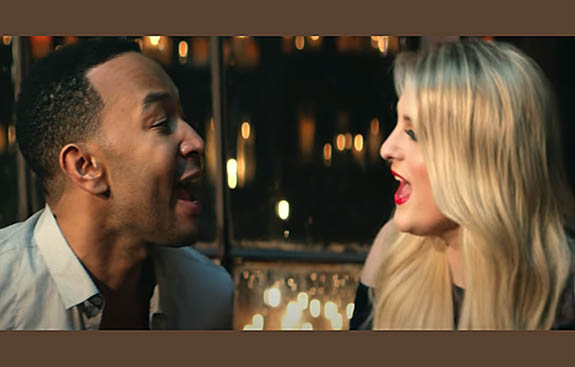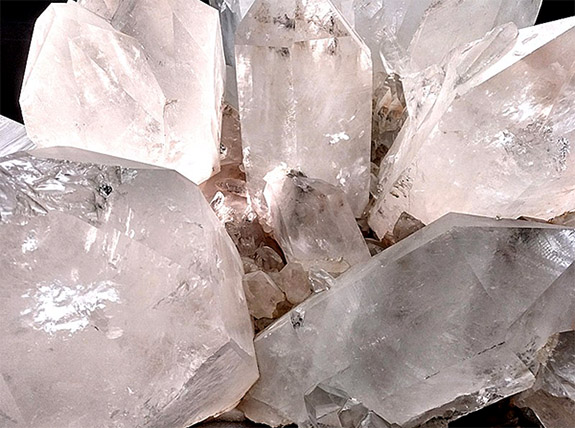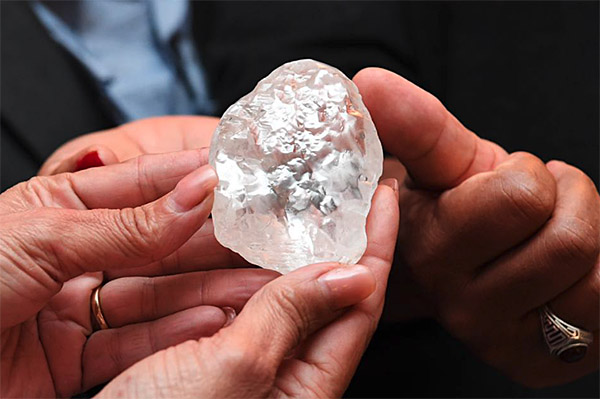Welcome to Music Friday when we bring you great songs with jewelry, gemstones or precious metals in the title or lyrics. Today we feature Meghan Trainor performing “Like I’m Gonna Lose You,” a chart-topping, jazzy ballad about never taking loved ones for granted and always making the most of life’s precious moments. The song's official YouTube video boasts 696 million views.
In the first verse, Trainor sings, “I found myself dreaming in silver and gold / Like a scene from a movie that every broken heart knows / We were walking on moonlight and you pulled me close / Split second and you disappeared and then I was all alone.”
Trainer, who co-wrote the song with Justin Weaver and Caitlyn Smith, explained to Digital Spy that the impassioned song was spawned by an all-too-real nightmare.
“[‘Like I’m Gonna Lose You’ has] very emotional lyrics that take you to a real place,” she said. “You know when you have those nightmares that your brother or sister or boyfriend just dies? And you wake up sweating and crying, and then you have to go check on them to make sure they’re still alive, and they are. And you’re like, ‘Oh my God, thank God.’ It’s like, I’m going to love you like I’m going to lose you because I know what it feels like from that dream and I’m not going to let it happen.”
Released as the fourth single from her chart-topping 2015 album, Title, “Like I’m Gonna Lose You” charted in 16 countries, including the #1 position on both the US Billboard Adult Top 40 chart and the Canada AC Billboard chart.
The song was originally intended to be a solo recording, but Trainor and her management team presented her demo to John Legend, who reportedly told Trainor, “I love this, I want to be a part of it. It’s gonna be cool.” The result is a beautiful collaboration between two of the music industry’s brightest talents.
The music video depicts Trainor staring through the window of a candlelit room as the rain pours outside. Legend sings his part from the outside of the building, separated from Trainor by a paned-glass wall. Interspersed are scenes of companions standing in the rain. Among them are a mother and infant child, a homeless man and his dog, a woman and her elderly mother, a man on crutches and his girlfriend, and a soaked-to-the-skin Legend, who plays Trainor’s love interest.
In the end, the sun breaks out, the sky brightens and Trainor and Legend join hands as if to symbolize a love that has conquered all.
Born on the Massachusetts island of Nantucket to retail jewelers Kelli and Gary Trainor, Meghan started singing at age six and wrote her first song at age 11. She attended Berklee College of Music and released two acoustic albums in 2011.
The 27-year-old’s big break came in February 2014, when she performed “All About the Bass” on ukulele for L.A. Reid, the chairman and CEO of Epic Records. That resulted in a recording contract and a monumental rise to stardom.
Please enjoy Trainor and Legend performing “Like I’m Gonna Lose You.” The lyrics are included if you’d like to sing along.
“Like I’m Gonna Lose You”
Written by Meghan Trainor, Justin Weaver, Caitlyn Smith. Performed by Meghan Trainor, featuring John Legend.
I found myself dreaming in silver and gold
Like a scene from a movie that every broken heart knows
We were walking on moonlight and you pulled me close
Split second and you disappeared and then I was all alone
I woke up in tears
With you by my side
A breath of relief
And I realized
No, we’re not promised tomorrow
So I’m gonna love you
Like I’m gonna lose you
I’m gonna hold you
Like I’m saying goodbye wherever we’re standing
I won’t take you for granted ’cause we’ll never know when
When we’ll run out of time so I’m gonna love you
Like I’m gonna lose you
I’m gonna love you like I’m gonna lose you
In the blink of an eye
Just a whisper of smoke
You could lose everything
The truth is you never know
So I’ll kiss you longer baby
Any chance that I get
I’ll make the most of the minutes and love with no regrets
Let’s take our time
To say what we want
Use what we got
Before it’s all gone
‘Cause no, we’re not promised tomorrow
So I’m gonna love you
Like I’m gonna lose you
I’m gonna hold you
Like I’m saying goodbye wherever we’re standing
I won’t take you for granted ’cause we’ll never know when
When we’ll run out of time so I’m gonna love you
Like I’m gonna lose you
I’m gonna love you like I’m gonna lose you
Hey
Whoa
I’m gonna love you
Like I’m gonna lose you
I’m gonna hold you
Like I’m saying goodbye wherever we’re standing
I won’t take you for granted ’cause we’ll never know when
When we’ll run out of time so I’m gonna love you
Like I’m gonna lose you
I’m gonna love you like I’m gonna lose you
Credits: Screen capture via Youtube.com / Meghan Trainor.


